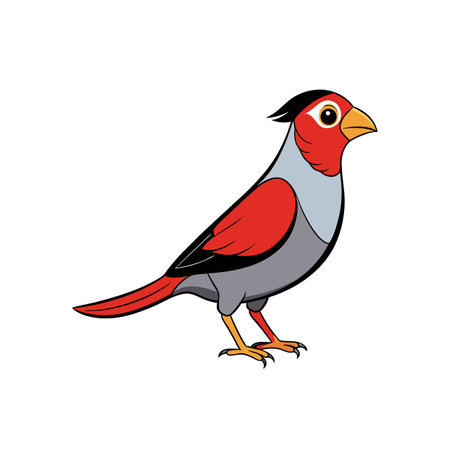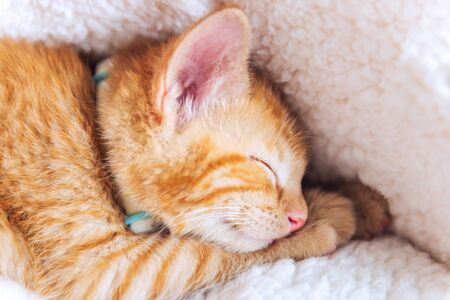Understanding the Unique Needs of Eclectus Parrots
Eclectus parrots are truly one-of-a-kind among companion birds, both in appearance and care requirements. Native to the lush rainforests of Australia, Papua New Guinea, and nearby islands, these parrots thrive in environments rich with vegetation and variety. Their natural habitat plays a big role in shaping their dietary and social needs, making it essential for owners to understand what sets them apart from other popular pet birds like cockatiels or African greys.
One standout feature of the Eclectus parrot is its vivid sexual dimorphism—males boast bright emerald green feathers, while females display deep red and purple hues. This visual distinction hints at their unique evolutionary path, which also extends to their behavior and well-being. Eclectus parrots are known for their gentle, inquisitive temperament. While they can form strong bonds with their human families, they tend to be more sensitive and observant than many other parrot species, requiring thoughtful interaction and plenty of mental stimulation.
Caring for an Eclectus isn’t just about providing a cage and some seed mix. Their distinct biological makeup means their nutritional needs are quite different from other parrots—they require a fresh, varied diet that mimics what they would find in the wild. Additionally, because they’re highly social creatures used to flock life, they need daily engagement and environmental enrichment to prevent boredom and stress. Understanding these foundational aspects of their nature is key to ensuring a healthy, happy Eclectus parrot in your home.
2. Special Dietary Requirements: Beyond Basic Birdseed
When it comes to caring for an Eclectus parrot, understanding their unique dietary needs is crucial. Unlike many other parrot species, Eclectus parrots thrive on a diet that goes far beyond the basic birdseed mix found at most pet stores. Their digestive systems are specialized for processing a wide variety of fresh foods, which means their meals should closely mimic what they would find in the wild—think colorful fruits, crisp vegetables, and minimal processed items.
Why Variety Matters for Eclectus Parrots
Eclectus parrots require a nutrient-rich and varied diet to support their vibrant plumage and energetic personalities. A monotonous or seed-heavy diet can quickly lead to health issues such as obesity, feather plucking, or vitamin deficiencies. In particular, these birds have a higher need for Vitamin A, which is essential for immune function and feather health.
Recommended Fresh Foods
| Category | Examples | Benefits |
|---|---|---|
| Fruits | Papaya, mango, pomegranate, apple (no seeds), berries | Rich in vitamins and antioxidants; hydrating and tasty |
| Vegetables | Carrots, sweet potatoes, bell peppers, leafy greens (kale, collard greens) | High in Vitamin A and fiber; supports digestion and feather quality |
| Legumes & Sprouts | Lentils, chickpeas (cooked), mung bean sprouts | Protein source; essential amino acids for growth and repair |
| Nuts (in moderation) | Almonds, walnuts (unsalted, raw) | Healthy fats; great for enrichment and training treats |
Foods to Avoid
Certain foods commonly found in American households can be harmful or even toxic to Eclectus parrots. It’s important to educate everyone in your family about these risks:
- Avocado: Contains persin, which is toxic to birds.
- Chocolate & Caffeine: Even small amounts can cause heart problems or death.
- Dairy Products: Birds lack the enzymes to digest lactose.
- Sugary or Salty Snacks: Processed foods can lead to serious health complications.
- Onions & Garlic: Can cause digestive upset and anemia in birds.
- Pits and Seeds from Fruits: Apple seeds and fruit pits contain cyanide compounds.
Practical Feeding Tips for U.S. Pet Owners
If you’re shopping at an American grocery store or farmers market, aim for organic produce whenever possible to limit pesticide exposure. Wash all fruits and veggies thoroughly before serving. Rotate food offerings daily to keep your Eclectus engaged and nutritionally balanced. Fresh water should always be available—and remember: what’s healthy for you isn’t always safe for your bird!

Feeding Frequency and Portion Control
When it comes to caring for an Eclectus parrot, understanding the right feeding frequency and portion control is crucial. Unlike some other parrot species, Eclectus parrots have a unique digestive system that requires regular access to fresh foods throughout the day. Ideally, you should offer food twice daily—once in the morning and once in the late afternoon. This routine mimics their natural foraging behavior and helps maintain their energy levels.
Ideal Portion Sizes
Portion sizes for Eclectus parrots can vary based on age, activity level, and individual needs, but a general guideline is to provide about one cup of mixed fruits, vegetables, and leafy greens per day. You can supplement this with a tablespoon of high-quality pellets or sprouted seeds as part of their daily intake. Be careful not to overfeed; Eclectus parrots are prone to obesity if given too many calorie-dense treats like nuts or seeds.
Recognizing Signs of Nutritional Imbalance
Pay close attention to your Eclectus parrot’s appearance and behavior as indicators of nutritional health. Dull feathers, excessive molting, lethargy, or changes in droppings may signal a dietary imbalance. In particular, Eclectus parrots are sensitive to excess vitamins and artificial additives. If you notice red or orange staining around the beak or feet, or behavioral changes such as irritability or plucking, consult an avian vet promptly.
Proactive Feeding Habits
To ensure optimal health, offer fresh food daily and remove any uneaten portions after a few hours to prevent spoilage. Rotate food items regularly to encourage curiosity and balanced nutrition. By maintaining mindful feeding routines and monitoring your bird’s condition, you’ll foster a thriving environment tailored to your Eclectus parrot’s special dietary needs.
4. Safe and Unsafe Foods: What’s OK on the Menu?
When it comes to feeding your Eclectus parrot, knowing which foods are safe and which are off-limits is crucial for their health and longevity. Since many American households stock a wide variety of groceries, it’s important to be mindful that not everything in your kitchen is bird-friendly. Eclectus parrots have sensitive digestive systems that react differently than other common pet birds, so even well-intentioned treats can cause harm if you’re not careful.
Safe Foods for Eclectus Parrots
Focus on offering a diverse range of fresh, organic fruits and vegetables—these should make up the majority of their diet. Here’s a quick reference table highlighting common U.S. produce and household foods that are safe:
| Safe Fruits | Safe Vegetables |
|---|---|
| Apples (no seeds) | Carrots |
| Bananas | Sweet potatoes (cooked) |
| Berries (all types) | Kale |
| Mango | Broccoli |
| Papaya | Zucchini |
You can also include cooked whole grains like quinoa and brown rice, as well as legumes such as lentils. Always avoid adding salt, sugar, or oils.
Unsafe Foods to Avoid
Certain foods commonly found in U.S. kitchens are toxic or otherwise harmful to Eclectus parrots. It’s essential to keep these off their menu at all times:
| Unsafe Foods | Reason |
|---|---|
| Avocado | Toxic to birds; can cause cardiac distress |
| Chocolate & Caffeine | Contains theobromine/caffeine, both highly toxic |
| Onion & Garlic | Can damage red blood cells; leads to anemia |
| Dairy Products | Birds lack enzymes to digest lactose; causes digestive upset |
| Alcohol & Salty Snacks | Toxic and can disrupt electrolyte balance |
A Few More Tips for U.S. Households
- Avoid all processed foods, chips, and fast food items—even tiny amounts.
- Nuts are okay in moderation if unsalted and unflavored (think raw almonds or walnuts).
- If you’re unsure about a new food, consult your avian vet before introducing it.
- Wash all fruits and veggies thoroughly to remove pesticides or waxes.
- Nix anything with artificial sweeteners, especially xylitol—it’s deadly to birds.
Your Takeaway:
The Eclectus parrot’s diet thrives on simple, natural foods found in most American produce aisles. Keeping a clear mental list—or this cheat sheet handy—ensures your feathered friend stays healthy while enjoying meals safely alongside your family.
5. Encouraging Natural Foraging Behaviors
Eclectus parrots are intelligent and curious, thriving when their daily routines mimic the rich, stimulating environments of the wild. In their natural habitats, these birds spend hours foraging for food, which keeps their minds sharp and bodies active. Replicating this experience at home is essential—not just for their physical health, but also to prevent boredom and behavioral issues. Here’s how you can encourage natural foraging behaviors using simple tips and tricks, including creative DIY ideas with items found in most American households.
Why Foraging Matters
Foraging isn’t just about getting food—its a mental workout for your Eclectus. The act of searching, problem-solving, and manipulating objects helps reduce stress and curbs negative habits like feather plucking or excessive screaming. By building a daily routine that challenges your parrot to work for treats or meals, you’re supporting their instinctual needs and boosting their overall well-being.
DIY Foraging Toys from Everyday Items
You don’t need fancy pet store toys to get started; many engaging foraging activities can be made with common items around your home:
Paper Cup Surprise
Take a clean paper cup (such as those used for coffee or parties), place some chopped fresh veggies or fruit inside, then fold down the top. Your Eclectus will love tearing through the paper to discover what’s hidden inside—just be sure there’s no ink or coating on the cup that could be harmful.
Cardboard Box Hideaways
Small shipping boxes or cereal boxes can be transformed into treasure chests. Fill them with safe materials like shredded paper and hide food pieces among the layers. Cut holes in the box so your parrot has to explore from different angles to reach their reward.
Muffin Tin Puzzle
A standard muffin tin can become an interactive game. Place treats in some of the cups and cover all the cups with crumpled paper balls. Your Eclectus will have fun lifting each “lid” to find which one hides the prize.
Tips for Successful Foraging
- Rotate toys frequently to maintain novelty and interest.
- Start easy: If your bird is new to foraging, make initial tasks simple before increasing difficulty.
- Supervise playtime to ensure safety—remove any items that become damaged or present a risk.
By integrating these accessible and affordable foraging opportunities into your parrot’s routine, you’ll not only stimulate their mind but also foster a happier, more balanced companion—echoing the wild experiences that make Eclectus parrots such fascinating pets.
6. Socialization: The Key to a Happy, Healthy Bird
Creating a well-adjusted Eclectus parrot starts with understanding their social instincts and tailoring daily interactions to meet those needs. These intelligent birds thrive on companionship and mental stimulation, making socialization a top priority for any responsible owner.
Best Practices for Bonding with Your Eclectus Parrot
Building trust is the foundation of a strong human-parrot relationship. Spend quality time each day talking softly to your Eclectus, offering treats from your hand, and engaging in gentle head scratches if your bird welcomes touch. Consistency matters—short, positive sessions are better than infrequent, longer ones. Always respect your parrot’s boundaries and avoid forcing interaction if they appear nervous or overwhelmed.
Managing Their Social Needs
Eclectus parrots are highly social but may become stressed if left alone for long periods. If you work outside the home, consider leaving on soft music or nature sounds to provide comfort. Rotate toys regularly and introduce new challenges like foraging puzzles to keep their minds occupied. If possible, arrange for family members to spend time with your parrot throughout the day so they feel like part of the flock.
Integrating Safely with Family and Other Pets
When introducing your Eclectus to new people or pets, go slow and supervise closely. Allow your bird to observe from a safe distance before gradually decreasing space over multiple sessions. Teach children how to interact gently and calmly with the parrot—no sudden movements or loud noises. With other pets, especially dogs and cats, always supervise their initial meetings and never leave them unsupervised together. Positive reinforcement training can help both your parrot and other pets develop appropriate behaviors around each other.
Ultimately, recognizing and honoring your Eclectus’s social nature will lead to a happier, healthier companion who feels secure within your household’s unique rhythm.
7. When to Seek Help: Recognizing Signs of Distress or Illness
Even with the best care, Eclectus parrots can experience health or behavioral challenges that require prompt attention. Being able to spot early warning signs is crucial for their well-being. In the U.S., connecting with an avian veterinarian at the right moment can make all the difference.
Spotting Early Warning Signs
Eclectus parrots are known for their vibrant personalities, but subtle changes can indicate underlying issues. Watch out for:
- Changes in Appetite: Sudden refusal to eat, picking at food, or excessive eating are all red flags.
- Lethargy: A normally active parrot that becomes withdrawn, sleeps more than usual, or shows disinterest in interaction could be unwell.
- Feather Condition: Look for dull, ruffled feathers, bald spots, or excessive preening and plucking.
- Abnormal Droppings: Changes in color, consistency, or frequency of droppings often signal digestive or systemic issues.
- Respiratory Symptoms: Wheezing, tail bobbing with each breath, sneezing, or nasal discharge require immediate attention.
Behavioral Red Flags
Sometimes distress manifests as behavioral changes rather than physical symptoms. Be alert to:
- Aggression or Fearfulness: Increased biting, screaming, or hiding may indicate pain or discomfort.
- Lack of Social Interaction: If your Eclectus suddenly avoids family members or stops vocalizing and playing, this could be a sign of stress or illness.
When to Contact an Avian Vet
If you notice any of these signs persisting for more than 24 hours—or if your bird appears severely ill—reach out to an avian veterinarian immediately. In the United States, you can find certified professionals through the Association of Avian Veterinarians (AAV). Regular wellness checks are also recommended even when your bird seems healthy, as some issues develop slowly and are easier to treat early on.
Your Role in Proactive Care
Being observant and responsive not only protects your Eclectus parrot’s health but also deepens your bond. Keeping a daily log of food intake, behavior patterns, and physical condition helps you recognize subtle shifts before they escalate into serious problems. Quick action paired with professional guidance ensures your Eclectus enjoys a long, joyful life as part of your American home.


